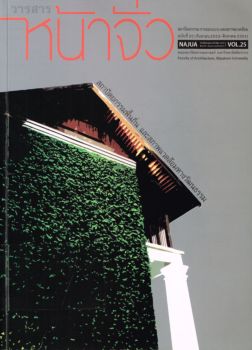Collapse of Khmer stone architecture: was it caused by the lack of structural knowledge or extrinsic environmental factors?
Keywords:
Khmer architecture, Khmer structural collapse, Khmer construction technique, drystone masonry, stone architecture, stone conservationAbstract
Angkor Wat is an example of great Khmer stone architecture that was constructed during the Khmer Empire era (802-1432 AD). In Thailand, there are also several major Khmer complexes, such as the Phnom Rung, Phnom Wan, and Phimai complexes, and a number of minor Khmer monuments. They are among the most impressive of man-made structures to be found anywhere in the world. Nevertheless, most of Khmer monuments collapsed, either partially or totally; their materials have deteriorated and weathered; and the entire monuments require urgent conservation. Hence, to propose appropriate restoration approaches, thorough understanding of its construction technique and causes of its failures is mandatory. It is, however, still doubtable whether Khmer masons’ and architects’ lack of structural knowledge or environmental factors should be the culprit of the failures of Khmer structural performance. Therefore, the main purpose of this article is to study the Khmer construction thoroughly and to analyse the causes of Khmer structural collapse.
Khmer structure failed not only because of its ineffective structural design and misuse of building materials, but also because of the combined effects of several environmental agents that caused different patterns of decay and damage. The ineffective design includes constructing the structure on the foundation that has uneven load-bearing capacity and using stone which is weak in tension as lintels and beams. Being built with drystone load-bearing system, the roofs and upper walls seriously moved and collapsed when the lower walls and door sets began to fail under the loads. Additionally, the error of construction process and the use of incompatible adjacent materials resulted in uneven strength of the walls. Regarding extrinsic factors, when extrinsic decay agents, such as tree root penetration and land sliding, were present, drystone Khmer walls supporting only compressive stresses failed to withstand lateral, shearing or fl exural stresses resulting in deformation or collapse of the structure.





